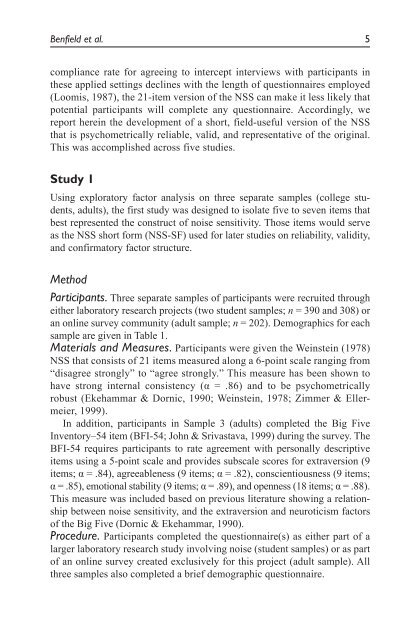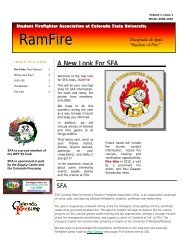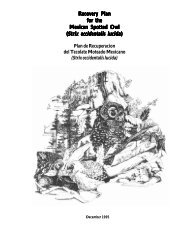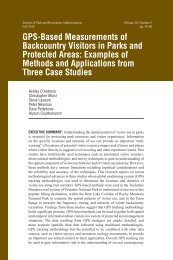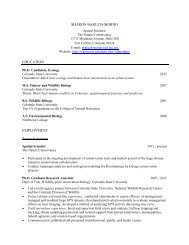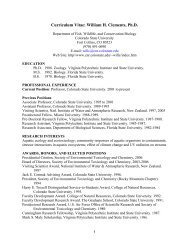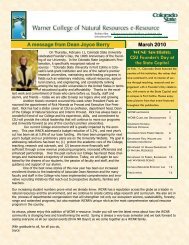Benfield, J.A., Nurse, G.A., Jakubowski, R., Gibson, A., Taff, D ...
Benfield, J.A., Nurse, G.A., Jakubowski, R., Gibson, A., Taff, D ...
Benfield, J.A., Nurse, G.A., Jakubowski, R., Gibson, A., Taff, D ...
You also want an ePaper? Increase the reach of your titles
YUMPU automatically turns print PDFs into web optimized ePapers that Google loves.
<strong>Benfield</strong> et al. 5<br />
compliance rate for agreeing to intercept interviews with participants in<br />
these applied settings declines with the length of questionnaires employed<br />
(Loomis, 1987), the 21-item version of the NSS can make it less likely that<br />
potential participants will complete any questionnaire. Accordingly, we<br />
report herein the development of a short, field-useful version of the NSS<br />
that is psychometrically reliable, valid, and representative of the original.<br />
This was accomplished across five studies.<br />
Study 1<br />
Using exploratory factor analysis on three separate samples (college students,<br />
adults), the first study was designed to isolate five to seven items that<br />
best represented the construct of noise sensitivity. Those items would serve<br />
as the NSS short form (NSS-SF) used for later studies on reliability, validity,<br />
and confirmatory factor structure.<br />
Method<br />
Participants. Three separate samples of participants were recruited through<br />
either laboratory research projects (two student samples; n = 390 and 308) or<br />
an online survey community (adult sample; n = 202). Demographics for each<br />
sample are given in Table 1.<br />
Materials and Measures. Participants were given the Weinstein (1978)<br />
NSS that consists of 21 items measured along a 6-point scale ranging from<br />
“disagree strongly” to “agree strongly.” This measure has been shown to<br />
have strong internal consistency (α = .86) and to be psychometrically<br />
robust (Ekehammar & Dornic, 1990; Weinstein, 1978; Zimmer & Ellermeier,<br />
1999).<br />
In addition, participants in Sample 3 (adults) completed the Big Five<br />
Inventory–54 item (BFI-54; John & Srivastava, 1999) during the survey. The<br />
BFI-54 requires participants to rate agreement with personally descriptive<br />
items using a 5-point scale and provides subscale scores for extraversion (9<br />
items; α = .84), agreeableness (9 items; α = .82), conscientiousness (9 items;<br />
α = .85), emotional stability (9 items; α = .89), and openness (18 items; α = .88).<br />
This measure was included based on previous literature showing a relationship<br />
between noise sensitivity, and the extraversion and neuroticism factors<br />
of the Big Five (Dornic & Ekehammar, 1990).<br />
Procedure. Participants completed the questionnaire(s) as either part of a<br />
larger laboratory research study involving noise (student samples) or as part<br />
of an online survey created exclusively for this project (adult sample). All<br />
three samples also completed a brief demographic questionnaire.


